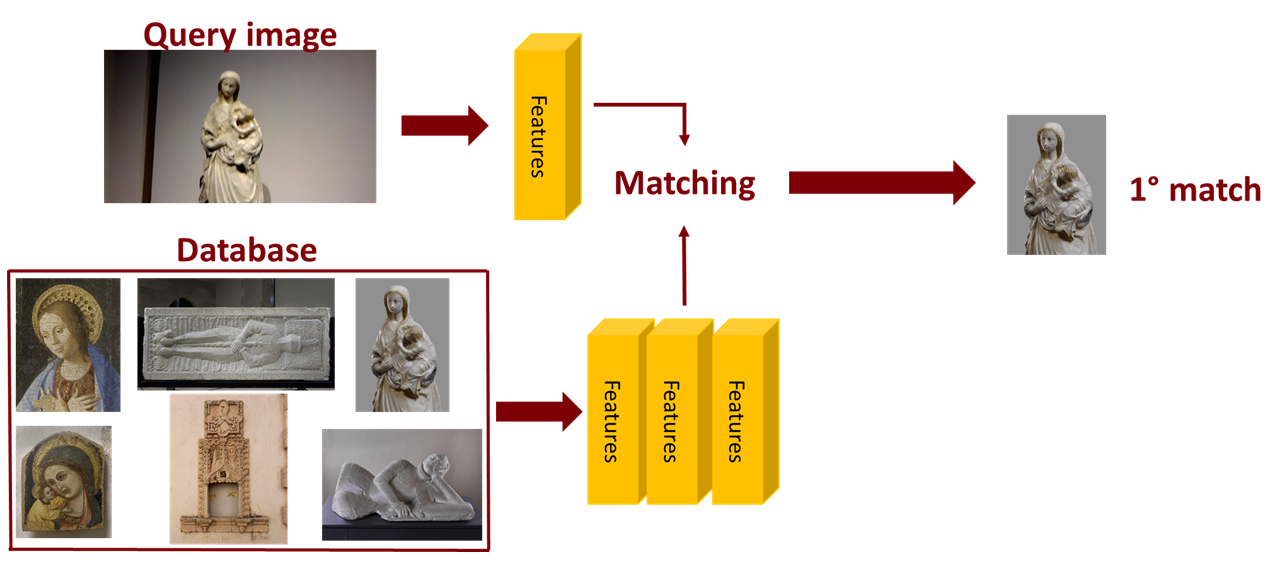Dataset

The dataset has been acquired using a head-mounted Microsoft HoloLens device in two cultural sites located in Sicily,Italy: 1) “Palazzo Bellomo”, located in Siracusa, and 2) “Monastero dei Benedettini”, located in Catania.
EGO-CH: Palazzo Bellomo
- 22 environments and 191 Points of Interest (POIs)
- Video Acquisition: 1280x720 at 29.97 fps
- 57 training video and 10 validation/test video
- 191 reference images related to the considered POIs
- Temporal labels to indicate the environment in which the visitor is located and the currently observed POI
- 70088 frames annotated with bounding boxes
- 23727 images patches extracted from the bounding boxes annotations
EGO-CH: Monastero dei Benedettini
- 4 environments and 35 Points of Interest (POIs)
- Video Acquisition: training/validation videos 1216x684 at 24 fps || test videos 1408x792 at 30.03 fps
- 48 training video and 5 validation videos
- 60 real visits
- 35 reference images related to the considered POIs
- Temporal labels to indicate the environment in which the visitor is located and the currently observed POI
- 106911 frames annotated with bounding boxes
- 45048 images patches extracted from the bounding boxes annotations
- 60 surveys related to the 60 real visits









